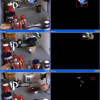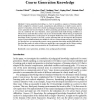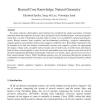322 search results - page 32 / 65 » Dynamic assembly of learning objects |
ITS
1998
Springer
13 years 12 months ago
1998
Springer
Abstract. Lifelike animated agents for knowledge-based learning environments can provide timely, customized advice to support leaners' problem-solving activities. By drawing o...
ICCV
2007
IEEE
14 years 9 months ago
2007
IEEE
We propose an approach to activity recognition based on detecting and analyzing the sequence of objects that are being manipulated by the user. In domains such as cooking, where m...
ECCV
2008
Springer
14 years 9 months ago
2008
Springer
Abstract. The use of sparse invariant features to recognise classes of actions or objects has become common in the literature. However, features are often "engineered" to...
ICCE
2007
13 years 9 months ago
2007
: Course generation knowledge, i.e., how to assemble a sequence of learning objects which is adapted to a learner’s goals, competencies and preferences, is hard to assess and exp...
COGSCI
2010
13 years 6 months ago
2010
For many centuries, philosophers and scientists have pondered the origins and nature of human intuitions about the properties of points, lines, and figures on the Euclidean plane,...



